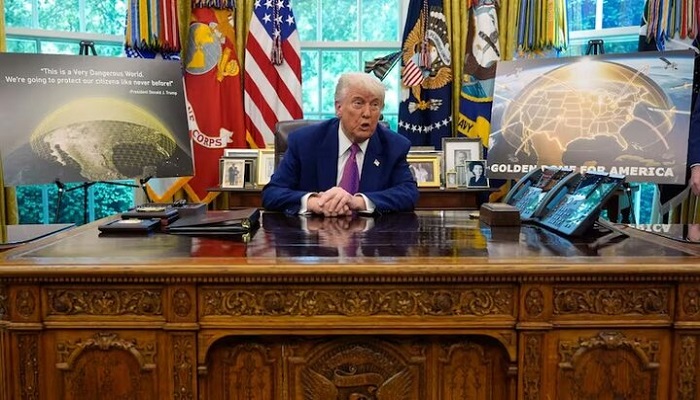PNN – Despite the American media hype about the production of the sixth-generation F-47 fighter jets, responsible sources in the Pentagon believe that completing this project faces many obstacles, including heavy costs.
According to the report of Pakistan News Network, citing Al Jazeera, Last March, after years of planning and preparation, US President Donald Trump announced the signing of a contract with American aircraft giant Boeing to produce and develop a sixth-generation fighter jet, and it was decided to name the fighter the F-47, in honor of Trump’s position as the 47th President of the United States.
When launching the production process of this fighter jet, Trump said that the world has never seen anything like it and our enemies will never see it, and he hopes that this fighter jet will fly during my presidency.
Read more:
The huge costs of F-47 fighters
The F-47 contract is worth nearly $20 billion over five years, and Boeing’s market value jumped by nearly $4 billion immediately after the announcement. The announcement came after Boeing was struggling with a reluctance to work with Pentagon officials and competition from Lockheed Martin, which makes the F-22.
According to available data, the cost of each F-47 fighter jet, of which 100 are to be produced, is $200 million. Former US Air Force Secretary Frank Kendall announced that the contract was not part of the previous administration’s plans and was not included in the 2026 US Department of Defense budget because other priorities prevented the aircraft from being included in this year’s Pentagon plans. But this change in plans by the new administration may reflect Trump’s growing interest in investing in the military industry.
Observers believe that it is unlikely that the US Army will be able to produce the F-47 fighter jets, especially given the experience it had with the fifth-generation fighter jet, the F-22, which faced many problems, especially high costs.
The F-22 fighter jets were discontinued in 2011 after a short period of testing, and the main reason for stopping their production was high costs; especially since the then US administration, headed by Barack Obama, was trying to reduce costs to overcome the global financial crisis.
Each F-22 fighter jet cost the US $369 million at the time, and their flight hour cost approximately $85,000—more than doubles the cost of the F-35. So the decision was made to scrap the project, and it remains the same today.
Therefore, the US Air Force has not included the F-47 fighter project in the 2026 budget. Frank Kendall said: To put it simply, we didn’t have the money, and the lack of funding is the real reason why work on this fighter has been stopped.
Features of the F-47 fighter jet
Regarding the characteristics of the F-47 fighter jet, according to the prototypes, it appears that the fighter jet has delta-shaped wings and no tail, and this feature enables it to be stealthy and camouflaged, and prevents radar radiation from reflecting off the sides of the aircraft; something that was evident in the development of the US military’s first to fifth generation fighter jets.
Unconfirmed reports also indicate that the fighter will use a new technology called thermal coating, and a set of new materials have been considered for the aircraft’s fuselage that can reduce heat emission and noise, thus, the fighter will be able to evade heat-seeking radars.
The fighter jet may also have an adaptive engine, especially since the Pentagon has allocated significant funding in recent years to develop a new generation of engines called “adaptive propulsion engines” that can be installed on a variety of vehicles. This engine allows the aircraft to adjust its performance to different conditions, allowing it to fly at high speeds and consume less fuel.
Why can’t the F-47 solve the challenge of American air superiority?
One of the most important challenges facing American fighter jets that challenges the country’s air superiority is their inability to evade anti-aircraft missiles. One of the important missions for air superiority is to successfully penetrate enemy airspace, and for this purpose, the fighter must be able to evade advanced defense systems. In recent years, the Chinese and Russians have developed their own defense systems that are more advanced in terms of performance than their American counterparts and cost much less, making them attractive to many countries.
Meanwhile, Russia has the famous S-300 air defense system, the latest version of which is the S-500, which is an air defense system with a long-range ballistic missile. Russia says that this defense system is capable of countering all hypersonic weapons and has conducted tests in which the system destroyed targets at a range of more than 380 kilometers.
This Russian system works with advanced radars that are theoretically capable of detecting F-22 and F-35 fighters, and has anti-radar evasion capabilities that can detect radar-evading fighters.

